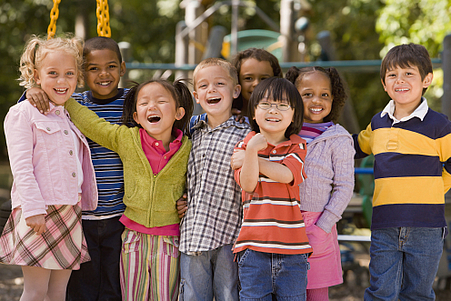 Gabby Pritchard, co-author of the forthcoming Kindergarten series, Show and Tell, offers some practical tips for encouraging your Kindergarten children to communicate in English.
Gabby Pritchard, co-author of the forthcoming Kindergarten series, Show and Tell, offers some practical tips for encouraging your Kindergarten children to communicate in English.
From the moment toddlers begin to discover the exciting world around them, they begin to acquire the language they need to express their curiosity and be understood by others. They very quickly learn to use simple questions to find answers. What? Where? When? How? and Why? become favorite words as they explore how their world works.
So, how can we create a classroom environment that encourages young children to continue their exploration of the world through a new language? Here are some ideas.
1. Begin with questions
Use posters, photographs, toys and real objects to stimulate children’s curiosity about a new topic. Let them feel the objects. Ask plenty of questions: What can you see? What’s this? What color is the…? How many…? Where is…?
Use the same questions every time you introduce a new topic so the children become familiar with them. As they gain confidence, encourage the children to ask some questions of their own too.
2. Cooperative learning
Organize children into small groups to carry out simple investigations and experiments, play language games, act out stories and complete craft activities.
By working cooperatively, your children will find they need to talk about how to complete tasks, assign roles and solve problems. They will also develop their social skills, such as learning to share and turn taking.
Always encourage children to use polite language when working alongside each other. Phrases such as: Let’s play with the… Please pass the… and You’re welcome are very useful phrases. They will help children develop respect for others and form positive relationships. Try teacher trainer Freia Layfield’s idea for a role-play activity that teaches children valuable life skills while getting them to talk in English.
3. Get more from stories
Young children love to immerse themselves in the world of make-believe. Using stories in class provides a great basis for getting children to talk about motivation, consequences and feelings.
Read aloud, or play audio recordings of, short, simple stories. Then ask questions to get the children to think carefully about the characters and events. The questions should encourage a deeper understanding of how and why things have happened.
You can begin by asking simple questions, for example, Is the giant happy? Are the bears angry? Then move on to more probing questions: Why is Jack scared? Why are the bears angry?
When the children have explored a story, encourage them to work in groups to act out the story using props. You may be surprised by how much more enthusiastic the children are, and how much more they put into their acted versions of the stories, once they have explored the meaning thoroughly.
4. Show and Tell
A great way of rounding up a topic and reinforcing what children have learned is to set up group or class projects. These can include:
- topic-related craft activities
- hands-on tasks such as growing plants or preparing snacks
- recording activities such as making graphs of class preferences or talents
- bringing to class a favorite toy or book to talk about.
Start ‘Show and Tell’ sessions by talking with the children about what they are going to produce, getting them to contribute ideas about how they will do this and the sorts of equipment they will need to complete the project. Get the children to work together to produce different parts of projects where possible. If they need to work individually on a project, prepare sets of materials for groups to share, to encourage them to observe others and discuss ways of working in order to produce the best results.
Finally, have the children present their work to the class, to other classes, or even to their parents. This will help build confidence in their ability to express themselves and give them a real sense of achievement.
For a simple way to introduce the idea of Show and Tell to your kindergarten class, visit the page on ‘Teaching 21st century skills with confidence’ for another video tip from Freia Layfield. It comes with a free worksheet that you can download from the Oxford Teachers’ Club (it’s quick and free to register).
We’d like to hear from you
Please do share your experiences of getting children talking in class – we would love to hear about them. You can use the comments box below this blog.
Would you like more practical tips on developing communication and other 21st century skills with your Kindergarten children? Visit our site on Teaching 21st century skills with confidence for free video tips, activity ideas and teaching tools.
Related articles
- Five Easy Ways in Which You Can Encourage Young Children to Think Critically (oupeltglobalblog.com)
- 5 Ways to Prepare Your Students for the 21st Century (oupeltglobalblog.com)


This type of progrms will create new atmosphere in minds of of young generationa and also will support to rectify doubts as well as to recreate new ideas and new things.
I am giving wrong names of objects. Ex. I show them a teddy bear after I say “It is a dog” the students are getting crazy and exclaiming ” NOOOOO it is a teddy bear”. It is useful way in my classes.
This is a really fun way to get children thinking and talking in a new language. Thank you for posting.
[…] The Snowflakes English Club puts a lot of focus on encouraging children to speak and supporting their speaking skills development. Here’s an article on this topic from Oxford University: https://teachingenglishwithoxford.oup.com2013/11/04/look-whos-talking-getting-very-young-learners-to-speak-in-en… […]